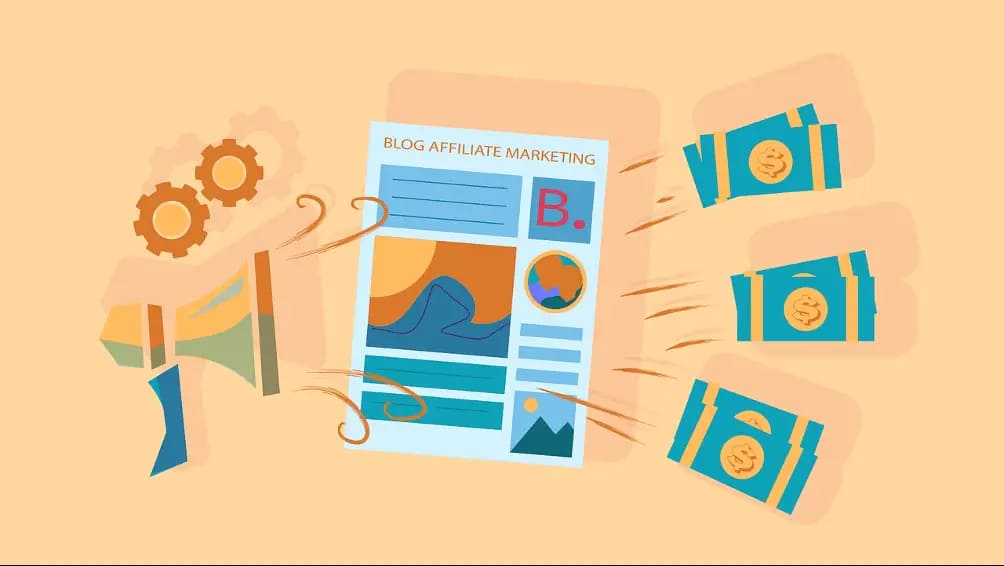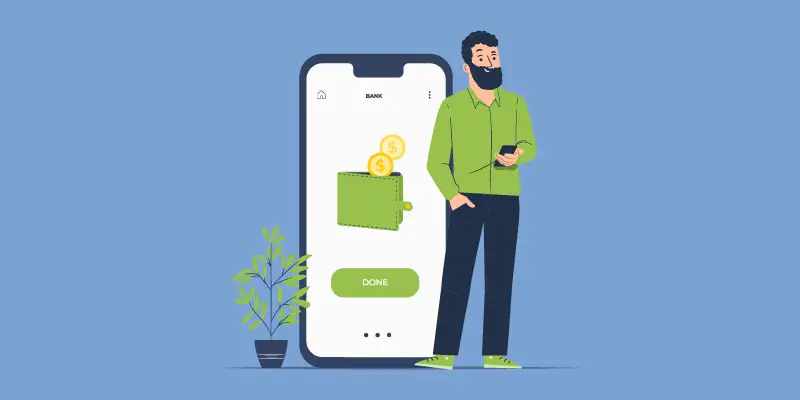Discover the secrets to monetizing your website traffic. Learn how to earn money through advertising, content sales, and affiliate programs.
Each year the number of online resources increases, and many of them not only are becoming the platforms for sharing information but also sources of income for their owners. If you’re wondering what site monetization is, in this article we’ll explain what website monetization is, its main methods, and why it’s currently so important for web resources.
What is website monetization and why is it necessary?
First of all, it’s important to understand what the term itself means. Monetization is a universal concept that applies in many economic areas. In the realm of the internet, it refers to the process of converting the activity of users on web resources, such as blogs or applications, into monetary income. Examples of monetization sources can include ads on YouTube, paid subscriptions, commercial posts on blogs, or mobile applications. In the case of web platforms, the main revenues often come from placing advertisements that correspond to the theme of the resource.
Therefore, website monetization represents a method of generating income through the placement of advertising, such as banners or paid posts. The key factor for successful income is the active interaction of users with the resource, or in other words, stable traffic. With the increase in the number of users, the potential earnings for the owner also grow.

Monetization is essential because creating a website involves investing time, even on free platforms. It not only covers maintenance costs but also generates additional income. If approached correctly, web content can become a stable source of income and a primary working platform.
Websites best suited for successful monetization
Websites of various themes can become a source of income, from specialized blogs to large commercial platforms and news portals. It is important to consider the specifics of the site to monetize it most effectively.
However, the key to success is attracting an audience. Without active visitors, even the most visually attractive and informative resource will not be able to generate income or help you monetize the platform’s earnings.
Even if your blog is aimed at a small audience, but you have gained the trust of your readers, you have every chance of monetizing your blog effectively. The main thing is to intelligently approach the choice of monetization strategies, as there are different methods.
All online resources can be divided into two main categories:
- Information portals
- Commercial platforms
Information portals provide visitors with quality and accessible information, helping them find answers to various questions. To attract and retain the target audience, owners of such resources should regularly publish reviews, compile interesting selections, and actively interact with the audience in the comments.
If you are the owner of a blog with a specific specialization, the number of visitors may be limited. However, these visitors will be genuinely interested in the topic. Therefore, to monetize your content, the most convenient way is to use materials sponsored by companies with a similar target audience.
Commercial platforms are geared towards presenting and selling various products and services. This category includes online stores, corporate pages, and platforms of individual brands. To maximize the revenue of such projects, it is recommended to use contextual or viral advertising, encouraging users to follow the proposed links.
Websites Not Suitable for Monetization
One-page sites or small sites consisting of just a few pages often face problems when trying to monetize. Therefore, answering the question of how much you can earn with a one-page site is quite complicated.
For example, platforms like Google AdSense set criteria to start monetization, such as having a minimum of 30 unique posts on the web page. This is one of the requirements to be met on how to monetize a website with Adsense.
Platforms with limited content often need external promotion to attract traffic, which can increase costs and reduce the efficiency of monetization.
Setting Up the Platform for Monetization
Putting ads on your website on newly created web pages too soon can deter potential visitors who aren’t ready to see ads on a new platform. Moreover, attracting partners during this time can prove challenging. Developing a website to obtain advertising revenue demands meticulous planning and a well-defined growth strategy. The primary focus should be on generating high-quality content and forging a solid relationship with the audience.

Begin monetizing your site with stable traffic. Choose strategies suitable for your traffic to maximize earnings. Advertising networks are a good starting point, evolving towards direct agreements. The quality and quantity of traffic are crucial for your income.
From the launch of your website until you start seeing significant revenue, a period ranging from a few months to several years may elapse. It’s not always easy to create a website to make money.
For effective monetization, maintaining an impeccable reputation and adhering to search engine standards is essential, even if you do not intend to make money with Google or similar platforms.
Before starting to monetize your website, we recommend ensuring you have completed the following steps:
- Identify your target audience. Pay attention to their interests and needs.
- Regularly update the content. Posts should be relevant and of high quality.
- Develop a content strategy and define the most suitable monetization methods for your site.
- Perform SEO optimization of your resource.
- Ensure your page meets the requirements of the main search engines, like Google.
- Work on key page indicators: Page Authority, PageRank, average user time on the site, among others.
- Actively use social networks to attract traffic.
- Publish links to your site on platforms with similar themes.
If your goal is to learn how to make money on your website with Google and start doing it, ensure that your platform is prepared for advertising before submitting the application. Otherwise, your site may not pass moderation on platforms that offer monetization.
Ways to Turn Your Website into a Source of Income
There are different types of monetization for online platforms on the Internet. Let’s look at the main ones.
Contextual Advertising (Google AdSense)
Contextual advertising displays ads relevant to the audience and theme of the website, whether textual, graphic, or video. Its effectiveness depends on its alignment with user interests, such as ads for sports equipment on an extreme sports site, as opposed to irrelevant ads like cosmetics.
To integrate contextual advertising on a website, one must start with registration on popular advertising networks such as Google AdSense. After familiarizing oneself with their requirements and rules, it will be necessary to insert a special code into your web resource. Then, for every click on an ad, a reward will be credited to your account.
Another method of how do websites make money is through banner advertising networks. Animated or static images are used as advertising messages. Webmasters have the opportunity to configure banner parameters: choose the location on the site, the type of image, and the field that best suits the content of their platform. To integrate such advertising, one needs to register on specialized platforms and then install the provided code on their website. The platform owner’s revenue is generated through ad views or clicks on the banners.
Selling Advertising Spaces
When integrating advertising on the desired web pages, you are not obliged to rely solely on external platforms. You can select advertisers on your own, offering them specific advertising spaces on your resource. In this case, pricing is completely at your discretion: you can set a price based on the number of impressions or a fixed cost for placement. This approach is especially effective for websites with high levels of daily visitor activity and, consequently, successful traffic monetization.
The sale of advertising spaces includes several modalities:
| Page Branding | Banners can be located on the sidebar, at the top of the page, or integrated directly into the content. |
| Banner Advertising | Banners can be located on the sidebar, at the top of the page, or integrated directly into the content. |
| Native Advertising | The main advantage of native advertising is its natural integration into the content, making it less intrusive for the reader. Although these materials are essentially advertising, they provide real value to the audience. A distinctive feature is the presence of mentions or the sponsor’s logo. |
| Pop-up Ads | Although many users find them annoying, their effectiveness is indisputable. They guarantee capturing attention. |
Affiliate Programs
One of the most popular types of monetization are affiliate programs. Affiliate marketing directly connects advertisers and webmasters, who place links, coupons, or banners on their sites. Clicks on these links that result in sales generate commissions for the webmaster. Alternatively, bloggers can increase their earnings with sponsored content.

To optimize the revenue of an online project, it is recommended to apply combined monetization methods. By choosing effective and non-intrusive advertising formats, you will ensure a steady and stable income for your resource.
Conclusion
Traffic monetization has become a key tool for website owners and bloggers looking to earn income from their content. Understanding what monetization is, its mechanisms, and instruments is not just a way to make money on your website but also an indicator of professionalism and a deep understanding of the digital ecosystem.
Before you start monetizing your blog, clearly define your target audience and evaluate the traffic on your web resource and choose your monetization strategies. Maintain quality content and choose suitable monetization methods, balancing content and advertising. Adapt to digital trends to influence users and optimize site monetization. A strategic and flexible approach ensures stable income and sustained growth in a competitive market. You’re now able to create a website and make money on it!
